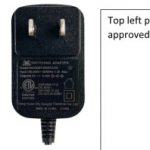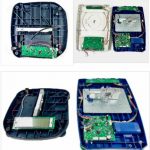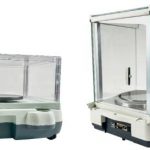The article below is courtesy of Mr. Boon Lim who has been involved in the weighing industry for many years. It really hammers home the points that we have been trying to discuss with customers for literally decades!
There are differences in quality between certain brands of scales. We’ve discussed this numerous times over the years either here in our learning center or on our Youtube channel or perhaps via phone or email with you. A lot of times it’s a balancing act between value & accuracy. Many customers don’t have the budget or the requirements for the top of the line most expensive scale… but they also don’t need to buy the cheapest scale under the sun either. Let’s take a look at what Boon found when he purchased some of the cheapest scales available online. We hope you enjoy the article below.
Have you noticed a quality shift in the weighing industry? Quality standards have
decreased significantly on consumer scales with “assembly only” operations making big
waves in the scale community. Large sellers are dominating the online retail space for
consumers, and this is not any different for scales. Whether you support the
unstoppable rise of these ecommerce giants or not, there is no denying the profound
impact associated with their operation.
So, we bought some of the “Best Selling”, highly rated, affordable scales and balances to test the quality.
Yes, with 2-day free shipping too.
Our discoveries were astounding…
At first glance we found non-UL approved AC adapters and direct wall plugs into scales
without UL. As we all know, overheating or short circuitry can cause electrical shocks
and fires. UL adapters are built by larger transformer companies and cost twice as
compared to non-UL parts. We reached out to UL Solutions headquarters specifically
and were surprised to hear that electrical products sold in the US do not need to bear a
UL marker legally.
What prompted this experiment is the amount of recent new brands in the US market.
We managed to trace back all the way to the manufacturers in China, who, surprise, are
not even scale manufacturers!
Upon further investigation Online Sellers approached these electronic companies and offered to help sell their products direct to end-users through fulfillment centers across the US. The number of units sold are between 300,000 to 500,000 over the last few years.
These new companies outsourced everything from blank scale casings, load cells,
displays, cables, adapters, display PCBAs and even arranged for independent software
engineers to change price computing scales’ software to counting scale software. This
technique has proven successful for these operations. However, at what cost to the
consumer? Let’s dissect below.
First up, product evaluation.
Scales we purchased:
- Counting Scale 30kg x 1g – $140, 30,000 division scale. Typical
performing 6,000 division, 30kg x 5g balance sells for $200 – $900
depending on features. Note the 6,000 divisions specification. - 500g x 0.001g – $128, 500,000 division scale. Scales of this caliber would
generally be called precision balances and would sell for several thousand
dollars each but would also have tight accuracy specifications and be
appropriate for actual laboratory usage. - Balance 3000g x 0.01g – $105, 30,000 division scale.
- Shipping Scale 440lb x 0.05lb – $42, 8,800 division scale.
- Shipping Scale 440lb x 6 oz – $39, 1,173 division scale.
- Price computing scale – $49 (non ntep) Compare to a local dealer’s pricing
that generally includes install, warranty and certification at ~ $300+.
#1. Non-UL approved AC adapters and direct wall plug into scale without UL
Low quality AC adapters can overheat, and bad circuitry can cause electrical shocks
and fires. UL adapters are built by larger companies, have circuitry to prevent
overheating. And yes, they do cost twice compared to non-UL parts.
Many new brands selling direct in the US market do not have a US company presence
here, hence their products may not have product liability insurance in the event that
these AC adapters and step-down transformers start a fire or cause electrical shocks.
#2. AD Processor (Analog to digital signal converter)
In full transparency, our industry standard is that most reputable balance companies
only use high quality US made Analog to Digital converters on high resolutions weighing
devices like balances and counting scales. In contrast, low-cost manufacturers use
kitchen scale A to Ds to reduce cost. Kitchen scale processors are only around a quarter each.
High-end A to Ds have precision resistors in the expanded electronics, faster speed and
much less front-end electrical noise, and cost much more.
#3. Masking Software
This is a software trick to deceive users and consumers that the balance is accurate.
For an example, when the scale does not return to ZERO, and there are still -/+
readings, the software will allow the scale to display ZERO. All scales have zero
tracking software, if this is increased to a wider window (d or divisions), the perception is that the “zero” is good.
Linearity errors from less accurate load cells can be corrected by 3-point, 5-point
linearity adjustment software. This is generally acceptable on older scales where
material counterforce is worn over many cycles, except that it does not correct
hysteresis and repeatability errors. Software can also be written to repeat weights like
100.00g, 200.00g, 500.00g.
The standard in the weighing industry is to place or take out 1.5d to 2d on the balance,
and it should show at least 1d change in weight. If the scale shows weight jumps like 100.00 to 100.04 to 100.7 to 101.00 then it is most likely the AD, load cell and software
are not sensitive enough to be considered as 0.01g balance.
One can use a lower cost 3000g x 0.1g balance and market as 0.01g. Place a 0.1g test
weight on the balance, and it will still register as 0.00g. The zero tracking or AZM is set
very wide, so the scale is dull and non-sensitive.
Another way is to place 100.00g weight, it showed 100.00g. Now place 100.01g weight
and then 100.02g and 100.03g weights. Lower cost balances will not be able to detect
these very small changes.
#4. Load Cells
A 3000g load cell cost can vary and physically look exactly the same. There are accuracy differences between kitchen grade cells, 30,000 division cells, and 300,000 division load cells. There are many sensor companies making ~ $1 kitchen scale load cells in China. Few have the technical knowhow to make 30,000 division cells and less than 3 sensor manufacturers can make 300,000 divisions sensors. They cost a lot more because of the knowhow, material, and time needed to test the cells to meet specs.

bathroom scale metal single gage load cells with no temperature compensation used in low-cost shipping scales
The 440lb x 0.05lb (8,800 External divisions!) shipping scale evaluated uses bathroom scale
electronics and no AD processor. These are ultra cheap 1000 ohm single gage metal load beams. These are very inaccurate and no corner adjustments are made, meaning that the scale may give different weight readings at all for 4 corners.
#5. Temperature Compensation
Low-cost load cells are mass temperature compensated, meaning that for every 10,000
pieces, the factory only checks a few units and compensates the entire batch with the
same resistors. They are mostly used in kitchen and bathroom scales. High end load cells are individually temperature compensated used in bench scales, balances and counting scales.
#6. Corner Adjustments
Corner adjustments and corner tests take a lot of time to adjust by filing down the
material or adding resistors. Most of the low-cost scales skip this assembly process to
save labor hours.
#7. Overload and Side Load Stops
No overload or side load protection on the scales as this takes more assembly time and
parts. The weighing scale is much more susceptible to damage.

First, load cell mount with overload and side load protections. Next two photos show no overload and side load stops. Also, load cells are mounted directly on plastic or just a thin strip of stamped metal instead of a large rigid metal plate
#8. Wrong Capacity Load Cells
Our industry standard is that we use 1.5 to 2 times the load cell capacity to scale
capacity. 1.5 times is acceptable in balances and counting scales because there should be no shock loadings, and 2X is used in other heavier industrial weighing scales.
One of the scales purchased for this project used a 3000g load cell in a 3000.00g balance. Assuming the platter and sub-structure weigh 400g, the usable capacity is only 2600g.
When a 3000g weight is placed on the balance, the initial weight can be as high as
4000g, so having a remainder capacity of 2600g is insufficient to avoid overloading the
load cell. The reason why a smaller capacity load cell is used in lower cost balances is that it does not have sufficient internal resolutions/counts to display the weight.
#9. Load Cell Mounts
Load cells in cheap scales are typically mounted on plastic instead of a steel plate. This is incorrect as plastics do flex and bend over time. It is the same as plastic footing (plastic threads). The mount on the top of the load cell is made from thin steel and there is no bottom support for the load cell that rests on plastic scale base. Best material a thick steel plate or diecast steel or aluminum and on the top of the load cell. This is also why the top scale brands are literally twice as heavy!
#10. Plastic Draft Shield
Ever notice that all high-end lab balances only use glass draft shields? Plastic draft shields create static.
So, if you are weighing 0.01 or 0.001g, the static on our clothing and hands
can cause significant errors when transferred to the draft shields.
#11. Casing
Recycled plastics are much less expensive than new ABS plastics, but recycled plastics
do crack easily. Low-cost price computing scales (non ntep) with pricing calculations, sell for under $50, that includes load cell, display, keypad, AC adapter, casing, AD processor, and all electronics. Manufacturers changed the software and are selling them as counting scales in the US market.
#12. Fake NTEP
The NTEP #COC (Certificate of Conformance) is real except sellers used same #COC
meant for one type of scales on others with different mounting designs. OEM
manufacturers also switched out NTEP load cells to other non-NTEP brands to save
costs.
Final Thoughts
Please buy genuine quality weighing products from established brands and through reputable scale distributors. I have been in the weighing industry since 1987, worked in international marketing, manufacturing, product engineering and designs in Ohio, Hong Kong, Singapore, Malaysia, Thailand, China, and Spain and in the last 15 years at Tree Scales in Northern California.
Here are a few suggestions and take-aways related to buying scales online
If your application is not “critical” I would suggest that kitchen, bathroom, and even mail
and parcel scales are not “critical” and can use the less expensive scale designs.
If you have applications like counting and your parts or pieces are of high value – you
owe it to your business to invest in reliable and accurate weighing equipment. You will also want to invest in a local scale provider so that your equipment can be well maintained and accurate.
If your application involves selling, you need to invest again in a reliable piece of
equipment with local service and repair available. If you are buying a grocery item do you expect accurate weights? Of course you do, so selling on a discounted, non-certified scale without local inspection is first, illegal and second, just wrong.
If your application is high volume freight, again you owe it to your business to make a
good investment as quality scales will likely save your company money.
And just to note, both UPS and FedEx have no trouble charging back wrong freight charges – that costs you extra and you can’t charge that freight to your customer as you have already billed them.
That saying, “You get what you pay for” is explicitly valid in this circumstance. Kitchen
scales and low end shipping scales have their place, but that is not in valid industrial business applications where quality and consistent accuracy is required.
I would encourage you to take special care when making decisions about weighing equipment. Consult with your local scale company. They have trained sales and service staff who have likely dealt with many types of scales and know what to recommend for your application.
The majority of this entry is courtesy of Boon Lim R&D at LW Measurements



